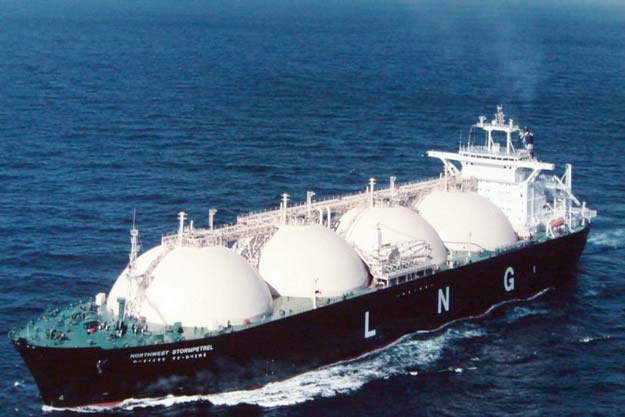
The government has failed to establish a mechanism for collecting transmission charges on imported liquefied natural gas (LNG) that will be injected into the pipeline network of gas utilities, though the first LNG consignment has reached Port Qasim.
It also wants to hold in abeyance the third-party access rules framed by the previous administration of Pakistan Peoples Party in the wake of reservations expressed by the utilities. These companies express fear that they will suffer heavy losses if the Third Party Access Rules 2012 for collecting LNG transportation charges are implemented.
Petroleum and Natural Resources Minister Shahid Khaqan Abbasi confirmed that the government had yet to address the issue. “We are going to finalise Asia’s best LNG deal with Qatar and the price will be agreed in an upcoming meeting,” he said.
Officials aware of the developments said the petroleum ministry had sent a summary to the Economic Coordination Committee (ECC), asking the body to allow the Oil and Gas Regulatory Authority (Ogra) to grant permission for third-party capacity allocation and set the transportation tariff under negotiated arrangements between the stakeholders.
It also suggested to the ECC that third-party access rules could be held in abeyance until the requested amendments were made.
Officials pointed out that the gas utilities had highlighted various bottlenecks in the third-party access rules, which were likely to hamper a smooth transportation of imported LNG through the existing pipeline network.
The capacity allocation in the existing network for the third party was to be decided under these rules. The role of utilities is limited to the transmission of LNG to the consumers and they are entitled to transportation charges under a pre-determined formula.
Furthermore, the gas utilities are bound to account for gas in terms of equivalent energy irrespective of the volume injected at the point of entry.
The excess volume supplied to meet the requirement of British thermal units will likely be considered unaccounted for gas (UFG), causing severe losses to the transporter – the two gas utilities. Under the circumstances, various sections in the rules require an extensive review.
At present, the utilities – Sui Northern Gas Pipelines Limited (SNGPL) and Sui Southern Gas Company (SSGC) – are engaged in the transmission and distribution of natural gas in the country. After its availability, the re-gasified LNG will be transported from the SSGC’s pipeline network to the SNGPL system under swap arrangements to meet the demand of consumers including the power producers.
The existing capacity of the transmission system is restricted to 325 million cubic feet of gas per day. This capacity has been allocated to the independent power producers (IPPs) from March and will be enhanced to 400 mmcfd by November.
Published in The Express Tribune, March 29th, 2015.
Like Business on Facebook, follow @TribuneBiz on Twitter to stay informed and join in the conversation.

1736235029-0/diddy-(50)1736235029-0-165x106.webp)
1736235781-0/Untitled-design-(6)1736235781-0-165x106.webp)
1736235454-0/Untitled-design-(73)1736235454-0-165x106.webp)








1726123200-0/Untitled-design-(13)1726123200-0-270x192.webp)

1736150117-0/Untitled-design-(1)1736150117-0-270x192.webp)








COMMENTS (1)
Comments are moderated and generally will be posted if they are on-topic and not abusive.
For more information, please see our Comments FAQ